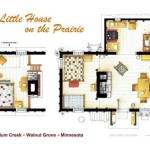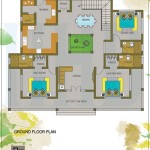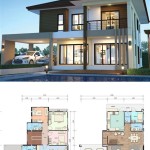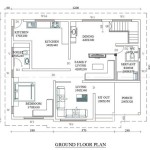Sea Container House Plans: A Comprehensive Guide
Sea container house plans are becoming increasingly popular as individuals and families explore alternative, sustainable, and cost-effective housing solutions. Utilizing intermodal shipping containers to construct homes offers a unique blend of durability, affordability, and design flexibility. This article provides a comprehensive overview of sea container house plans, covering essential considerations, design principles, construction techniques, and potential challenges.
Understanding the Appeal of Sea Container Homes
The growing interest in sea container homes stems from several key factors. Firstly, the inherent structural strength of shipping containers makes them highly resistant to weather elements like hurricanes and earthquakes. These steel boxes are designed for transoceanic transport, enduring harsh conditions. Secondly, the relative affordability of used shipping containers, compared to traditional building materials, presents a significant economic advantage. Thirdly, the modular nature of containers allows for creative architectural designs and facilitates quicker construction timelines. Finally, repurposing these containers contributes to sustainable building practices by reducing waste and promoting recycling.
However, potential homeowners should be aware of the limitations. While the cost of the container itself may be relatively low, the expenses associated with fabrication, modification, insulation, and transportation can quickly add up. Furthermore, obtaining building permits for container homes can be challenging in some regions due to code regulations and unfamiliarity with this construction method.
Key Considerations Before Embarking on a Container Home Project
Before purchasing any containers or finalizing any plans, careful consideration must be given to several key factors that will significantly impact the success of the project. Foremost among these is the local building codes and regulations. Zoning laws often dictate the permissible types of construction within a given area, and it's essential to ensure that container homes are allowed. Furthermore, specific structural and safety standards might need to be met to obtain the necessary permits. Researching these requirements beforehand can save considerable time and money in the long run.
The condition of the shipping containers is another crucial aspect. Containers are typically graded based on their condition, ranging from "new" to "as-is." Used containers may have rust, dents, or other damage that could compromise their structural integrity. A thorough inspection by a qualified professional is highly recommended to assess the container's suitability for residential use. Considerations should also be given to the container's history, particularly what it previously contained, to avoid potential contamination issues.
Site preparation is another important factor. The foundation for a container home needs to be designed to adequately support the weight of the containers and withstand environmental forces. The type of foundation will depend on the soil conditions and the design of the home. Options range from simple concrete pads to more complex pier and beam systems. Proper drainage is also critical to prevent water damage and ensure the longevity of the structure.
Finally, transportation costs for the containers should be factored into the budget. The cost of moving a container from its point of origin to the building site can vary depending on the distance, the size of the container, and the availability of transportation services. Specialized equipment, such as cranes and flatbed trucks, may be required, adding to the overall expense.
Designing with Sea Containers: Principles and Techniques
Designing a sea container home requires a unique approach compared to traditional construction. The inherent limitations and advantages of container dimensions dictate the design possibilities and necessitate creative solutions. Standard shipping containers come in two primary sizes: 20-foot and 40-foot, with widths typically around 8 feet. These dimensions influence the layout and spatial flow of the home.
One fundamental design principle is the modularity of containers. They can be stacked and arranged in various configurations to create different living spaces. Multiple containers can be joined together to expand the floor area, and containers can be stacked vertically to create multi-story homes. The placement of windows and doors requires careful consideration, as cutting large openings in the container walls can weaken the structure. Reinforcements, such as steel frames, may be needed to maintain structural integrity.
Insulation is a critical aspect of container home design. Steel is a poor insulator, and containers can become extremely hot in the summer and cold in the winter. Various insulation methods can be employed, including spray foam, rigid foam boards, and traditional batt insulation. The choice of insulation will depend on the climate, budget, and desired level of energy efficiency. Proper ventilation is also essential to prevent condensation and mold growth.
Interior design considerations are also important. The narrow width of containers can present challenges for furniture placement and spatial planning. Creative storage solutions, such as built-in shelving and multi-functional furniture, can help maximize the available space. Natural light is crucial to creating a comfortable and inviting living environment. Large windows and skylights can help bring in natural light, but they must be carefully integrated into the design to maintain structural integrity and energy efficiency.
Exterior design elements can significantly enhance the aesthetic appeal of a container home. Cladding materials, such as wood siding, metal panels, or stucco, can be used to transform the exterior of the containers and create a more traditional or modern look. Green roofs can also be incorporated to improve insulation, reduce stormwater runoff, and add visual interest.
Construction Process: From Container to Home
The construction process for a sea container home typically involves several distinct stages. The first stage involves the acquisition and preparation of the shipping containers. This includes inspecting the containers for damage, cleaning them thoroughly, and applying a rust-resistant coating. Any necessary modifications, such as cutting openings for windows and doors, are also carried out at this stage.
The next stage involves preparing the foundation. The type of foundation will depend on the design of the home and the soil conditions. Once the foundation is complete, the containers are transported to the site and positioned on the foundation using a crane. The containers are then welded together to create a structurally sound frame.
After the container frame is assembled, the insulation is installed. This is a critical step in ensuring the energy efficiency and comfort of the home. Once the insulation is in place, the interior and exterior finishes are applied. This includes installing drywall, flooring, and fixtures, as well as cladding the exterior of the containers.
Electrical, plumbing, and HVAC systems are installed according to local codes and regulations. These systems need to be carefully integrated into the container structure to ensure safety and functionality. Finally, the landscaping and exterior finishes are completed to create a comfortable and aesthetically pleasing living environment.
Throughout the construction process, it is essential to work with experienced professionals who have expertise in container home construction. This includes architects, engineers, contractors, and inspectors. Engaging qualified professionals can help ensure that the project is completed safely, efficiently, and in compliance with all applicable codes and regulations.

9 Container Home Floor Plans That Maximize Space House Design

Container Home Floor Plans Types Examples Considerations Cedreo

8x20 Container Floor Plans House Building A Home

Intermodal Container Home Floor Plans Below Are Example One Two Three Bedroom Residential Primer Rscp

2 Story Container Home Floor Plans

Container Home House Plans Cargo

20 Foot Container Home Floor Plans

Container House Plans Floor

20 Foot Container Home Concept House Plans

Container Homes Buildings Modular Home On Steep Slope Marin








